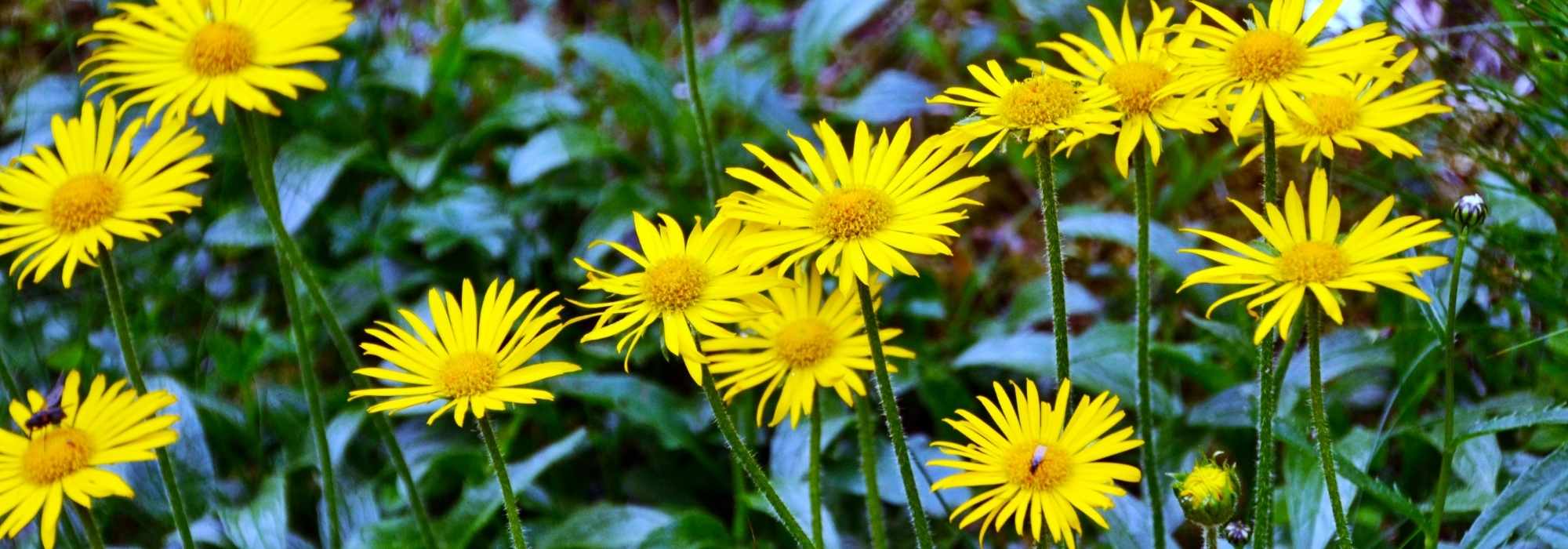
Buphthalmum : planting, cultivation
Contents
Buphthalmum in a nutshell
- It offers a long sunny flowering throughout summer
- Its sunny yellow daisy flowers attract the eye as well as bees and butterflies
- Very hardy, it requires little maintenance
- Of great ease of cultivation, it loves the sun
- It performs well in borders, window boxes or pots
A word from our expert
With its generous and radiant flowering, the Buphthalmum is a beautiful perennial plant with daisy-like flowers, like the Buphtalmum salicifolia or willow-leaved Buphtalme, its most well-known representative.
Its elegant green foliage serves as a backdrop for numerous golden yellow daisies that appear continuously from June to September. With its rustic charm, it brings cheerfulness and liveliness to all natural gardens and naturalistic gardens. It forms beautiful, highly floriferous and melliferous clumps up to 60 cm tall, in warm shades.
It is a hardy perennial plant, easy to grow in all gardens, in full sun, in fresh and well-drained soil.
With our Buphthalmum, treat yourself to sunshine all summer long to flower a bed, a border, or a pot!
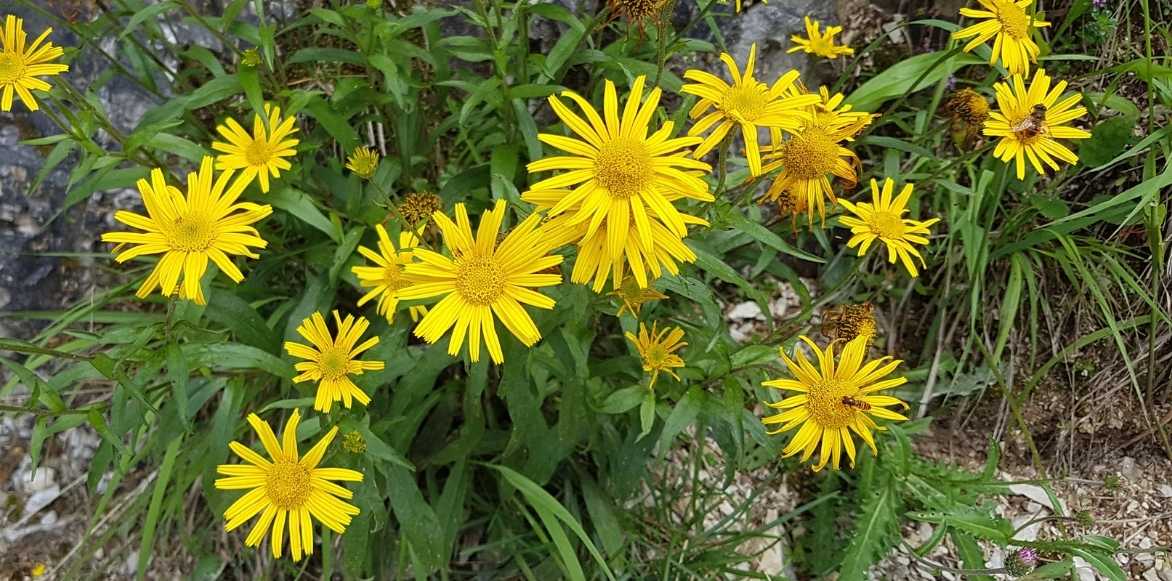
Buphthalmum salicifolium
Description and Botany
Botanical data
- Latin name Buphthalmum
- Family Asteraceae
- Common name Eye of the bull
- Flowering June to September
- Height 0.25 to 0.60 m
- Exposure Sun
- Soil type Rich, cool, well-drained
- Hardiness -15 °C and beyond
The Buphthalmum or Willow-leaved Buphtalme, sometimes nicknamed “eye of the bull,” is a perennial plant from the Asteraceae family, like daisies and asters. Only the species Buphtalmum salicifolia is cultivated for ornamental purposes in our gardens, but it has given rise to a few varieties such as Buphthalmum salicifolium ‘Dora’.
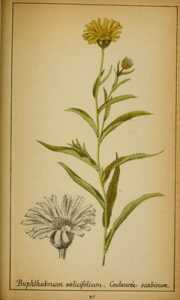
Buphthalmum, botanical plate from 1878
It is found in the wild at the edge of woods or in sunny, dry, rocky meadows, in the Alps, Jura, and Alsace, sometimes up to 1800 m in altitude and in certain regions of Central Europe. It is a very vigorous perennial, capable of withstanding drought as well as frost, down to -29°C.
From a woody stump, the plant develops in spring a bushy tuft with a dense and upright habit. It reaches 25 to 60 cm in height.
The numerous simple or branched stems, robust and rough, bear deciduous foliage of bright green matte colour. The leaves that punctuate them are lanceolate, narrow like those of willow and slightly dentate, hence its vernacular name “salicifolia,” meaning willow in Latin. Arranged alternately along the stems, they measure about ten centimetres long.
Throughout the summer, from June-July to September, many small daisy-shaped golden yellow flowers bloom tirelessly on this light vegetation. The slender flowering stems then bear profusely these solitary flower heads of about 5 cm in diameter. They are formed of thread-like ligules, pointed and fringed at their ends, radiating around a heart of sun-yellow florets. The collar spreads almost horizontally.
This generous flowering is melliferous and attracts pollinating insects, such as butterflies and bees. It is one of those plants that contribute to natural biodiversity. Once flowering is over, the discs turn brown to give way to seeds.
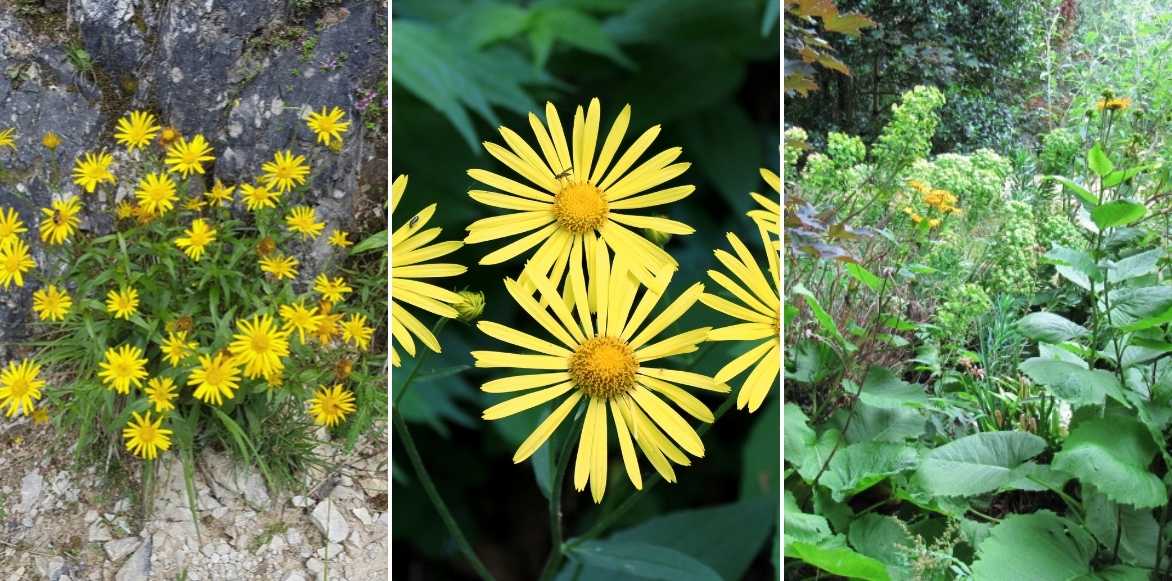
Buphthalmum salicifolium tuft and close-up of the flowering; on the right Buphtalmum speciosum (© Leonora Enking)
Main species
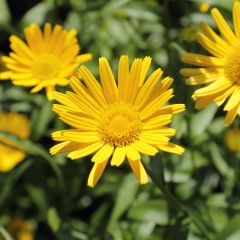
Buphthalmum salicifolium Dora
- Flowering time July to September
- Height at maturity 60 cm
Discover other Buphthalmum
View all →Available in 1 sizes
Available in 1 sizes
Available in 1 sizes
Available in 1 sizes
Planting Buphthalmum
Where to plant it?
The Buphthalmum salicifolium is very easy to grow. It withstands large temperature fluctuations: both intense heat and severe frosts. Hardy down to at least -25 °C, it can be planted in all our regions. Very adaptable to soil types, it will thrive in good well-drained garden soil that remains relatively cool during summer, although it will also tolerate ordinary soil that is occasionally dry and stony, even calcareous. To see it bloom abundantly, some moisture in the soil is preferable. While it can occasionally tolerate drought and intense heat, it will, however, fear waterlogged soil in winter.
Provide it with a location in full sun, or even light shade in the most exposed regions of our country.
Its rustic and cheerful appearance, along with its medium size, makes it ideal for enlivening borders and mixed borders, or to flower at the base of a well-exposed wall, such as in window boxes or pots as it is also suitable for pot cultivation.
When to plant Buphthalmum salicifolium?
The best time to plant it is in spring from February to April or in autumn from September to November, avoiding dry periods and when the risk of frost has passed.
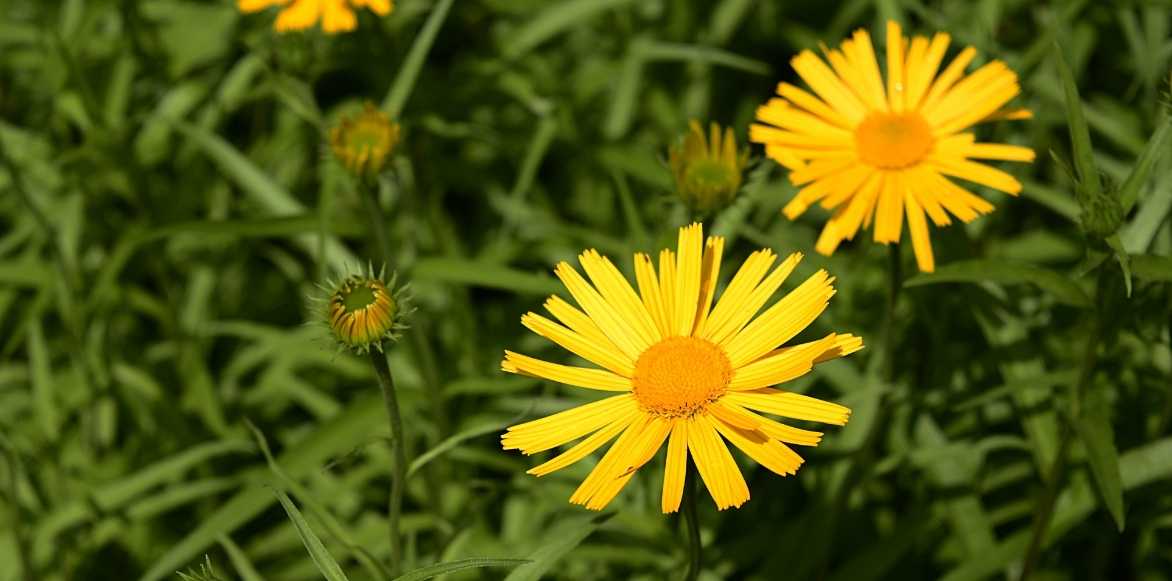 Buphthalmum salicifolium
Buphthalmum salicifoliumHow to plant it?
In the ground
A soil rich in organic matter will allow it to bloom well. In very poor soil, we recommend adding well-matured compost.
- Soak the bucket in a bucket of water to moisten the root ball
- Dig a hole equivalent to 2 or 3 times the size of the bucket
- If necessary, improve drainage by spreading a layer of gravel, clay balls, pumice at the bottom of the hole…
- Mix one or two handfuls of compost with the garden soil
- Place the root ball and fill in without burying the collar
- Lightly firm the soil
- Water regularly after planting, especially if the season is dry
In a pot
Choose a pot of 30 to 50 cm with drainage holes at the bottom to facilitate water evacuation.
- Spread a good layer of drainage (gravel or clay balls) at the bottom of the pot
- Fill the pot with a mixture of garden soil (1/2), potting soil for flowering plants (1/2), and a handful of compost
- Plant without burying the collar and fill in
- Water very regularly, never allowing the substrate to dry out
Cultivation and maintenance
Once well established, Buphthalmum requires little care. It appreciates soil that remains moist during summer, especially in the first few years, and it will tolerate temporary drought better over time. The plant should remain moist, particularly during periods of growth and flowering. In case of high temperatures, water regularly but without flooding. You can mulch in May to ensure the plant has sufficient moisture in summer.
Every spring, add two or three handfuls of well-rotted compost at the base by lightly scratching the surface.
In pots, pay more attention to watering during the warm season as the soil dries out more quickly. Allow the substrate to dry out between waterings. Optionally, provide a fertiliser for flowering plants in spring and summer. Repot your plant each year in fresh potting soil.
In summer, remove faded flowers as they appear to prolong flowering.
After flowering, cut back the stems to 15 cm above the soil using a shear.
Every two years, in spring or autumn, divide the clumps to rejuvenate them.
Diseases and potential pests
Robust, it is simply endangered by slugs and snails that can be quite fond of its young shoots in spring. Discover our tips to naturally combat gastropods.
Multiplication
The simplest method to multiply buphthalmum is by clump division, preferably carried out at the beginning of spring.
- Using a sharp spade, lift the clump
- Cut out a few sections while retaining as many roots as possible
- Replant immediately in the desired location in well-prepared soil
- Water and mulch
Associate with the garden
The radiant flowers of buphthalmum bring liveliness and simplicity to the garden. With their rustic charm, they integrate perfectly into natural gardens and naturalistic gardens alongside other perennials that are just as easy to care for.
If possible, plant them in masses. Within a summer flower bed, they will form colourful carpets amidst summer-flowering perennials in warm hues. They can be surrounded by other daisy-like flowers, such as Echinaceas, Rudbeckias, yellow daylilies, Heliopsis helianthoides ‘Mars’, Leucanthemum ‘Banana Cream’, or even gaillardes. Some clumps of grasses like Miscanthus will add softness to this abundant scene.
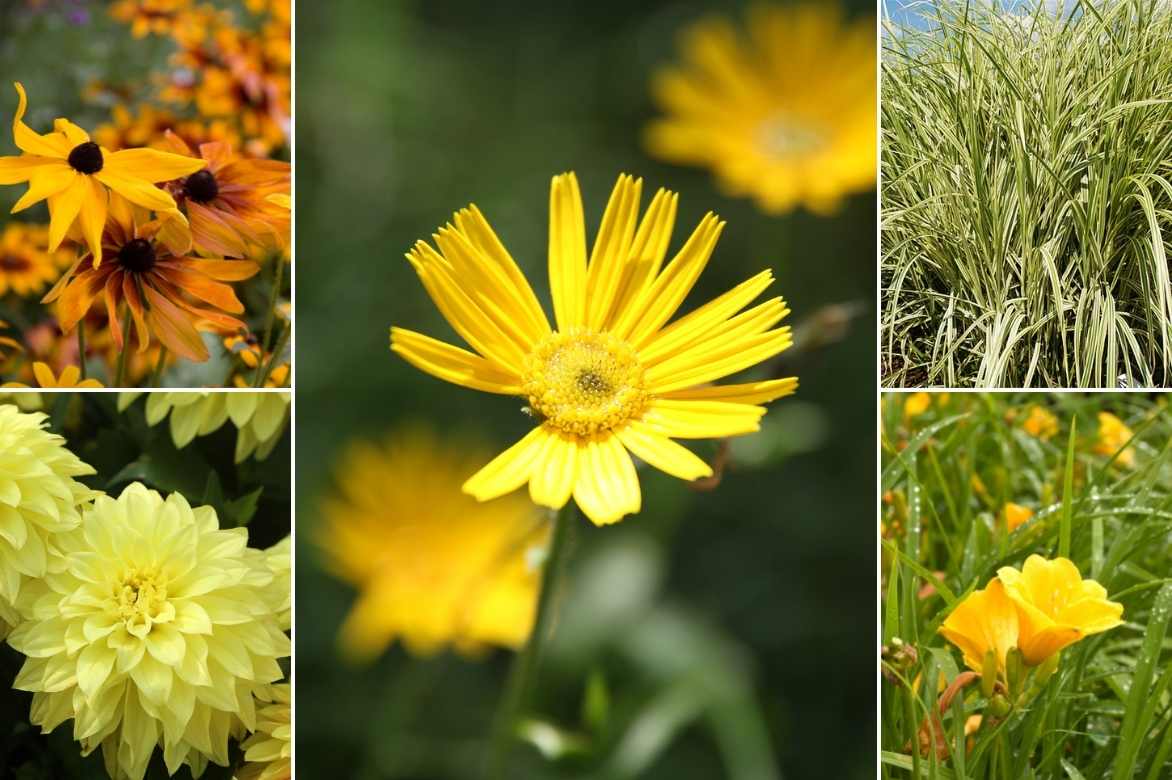
Rudbeckias, yellow dahlias, Miscanthus sinensis ‘Variegatus’, and yellow daylilies accompany the sunny flowering of Buphthalmum
Flowers in cool colours, such as Siberian sages, Buenos Aires verbena, Asters, and Veronicastrums will provide an effective contrast of yellow/blue.
At the edge, it will shine alongside small Heleniums, dwarf dahlias (Happy Single), Sages, and dark-leaved heucheras (heuchera ‘Black Pearl’) that will greatly enhance its warm tones by creating a colourful backdrop at its base.
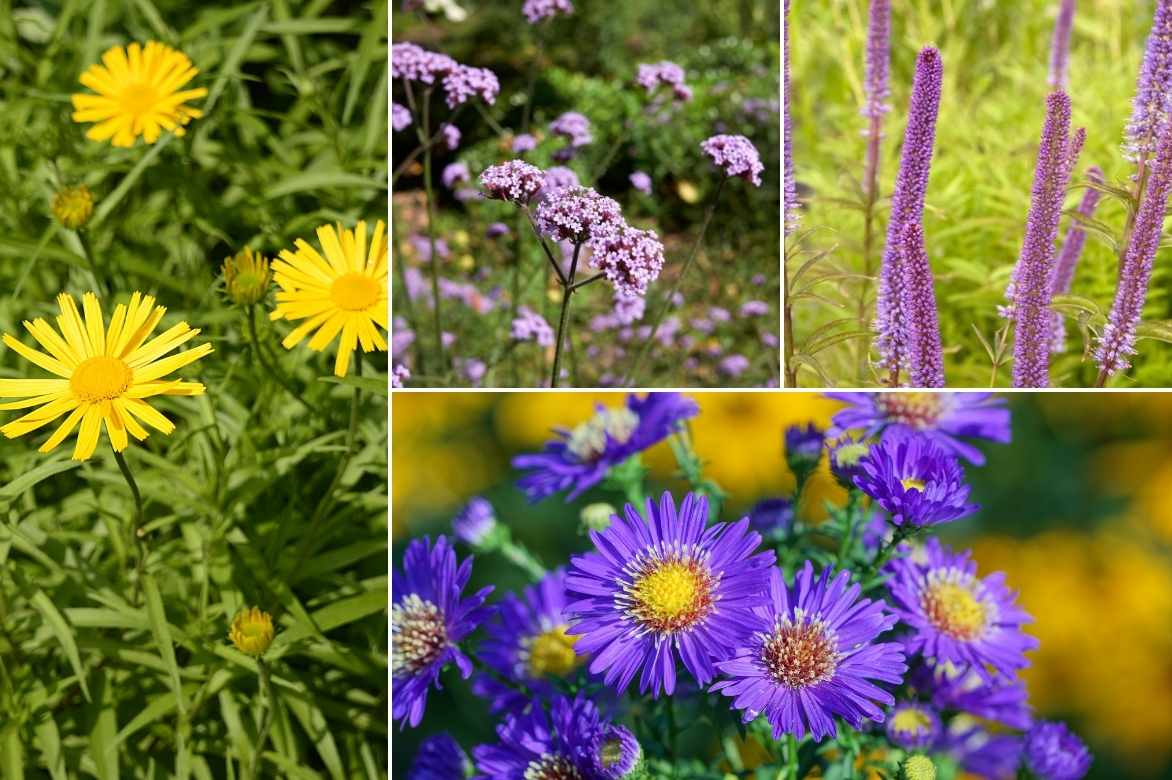
Buphthalmum, accompanied by Buenos Aires verbena, Veronicastrums, and Asters for a yellow and blue scene
Useful resources
- Learn how to temper yellow flowers in the garden and adopt them!
- What to plant with your Buphthalmum in a sunny meadow?
- Subscribe!
- Contents































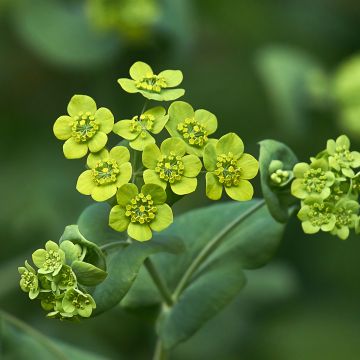
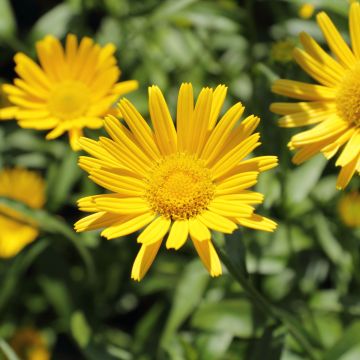

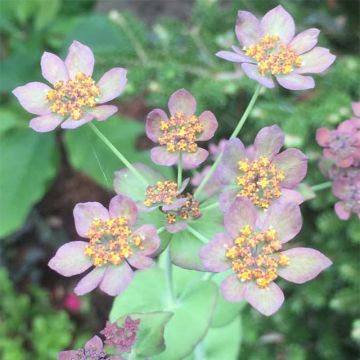
Comments